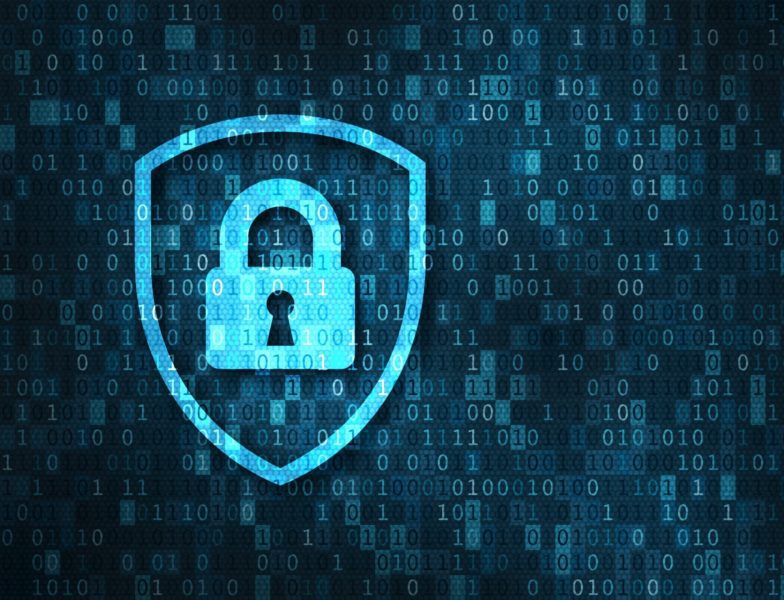You’ve received an email from your bank telling you that there’s an issue with your account. It’s asking for a lot of personal information, but your bank’s logo is in the email, and everything looks legit. Chances are, it’s not.
No official bank will ask for personal information via email. If you send over what’s requested, you’ll be putting all your confidential data in the hands of a hacker. This is what’s known as phishing.
It’s one of the most common cybersecurity issues that you’ll run into, but it’s not the only one. If you’re not careful while browsing the net, you’ll leave yourself vulnerable to all types of malware. Keep reading to learn what you should be on the lookout for.
Malware
When people think of the types of cyber threats out there, malware is probably what comes to mind. Unless you have virus protection and leave your firewall up, you risk ransomware, worms, viruses, trojan horses, and all sorts of other problems.
Trojan Horse
The name trojan horse comes from the story in ancient Greece. The Greeks hid in a huge wooden horse in order to enter Troy and attack from the inside.
Digital trojan horses work the same way. You’ll get a notification to download a program that seems helpful. It might even pose itself as an antivirus program.
The second you download it, other viruses will sneak in through an opening that the program provides. That’s why you should never trust any program from the internet. Not until you scan it with antivirus software anyway.
Viruses
Viruses attack the programs in your computer by attaching themselves to them and merging with the coding. From there, the virus will replicate itself over and over again until it spreads across your entire device.
Ransomware
Ransomware is the most annoying type to deal with. The hacker will lock the user out of certain programs on their device. Sometimes they’ll even stop the user from accessing their computer altogether.
The hacker will either threaten to share or delete the data unless the victim sends over a requested amount of money. The ransom, if you will.
In desperation to stop their data from being deleted, many people fall for the trap and do what is requested of them. The thing is, there’s no guarantee that the hacker will release the encryption. In fact, nine times out of ten, the user doesn’t get their data back.
Worms
Worms work a little like viruses, except they mask themselves as an email attachment. If you click on the attachment, it will scan your entire contact list.
It will then replicate and send itself to the people on your list. The idea is to overload the email servers. This creates a denial-of-service attack, which we’ll get into a little later.
Spyware
The last type of malware is spyware. As the name suggests, its purpose is to collect user information. It will then send this information to a hacker who will use it to blackmail the victim.
Phishing
Next to malware, phishing is the next most common form of cyberattack. As we explained in the beginning, a hacker sends a mass amount of fraudulent emails out to unsuspecting users.
The emails seem legit, but in reality, they are anything but. They often include a link. If the victim clicks on the link, the virus will set to work, extracting the user’s valuable information.
Phishers don’t only attack via emails. They can also send you messages through social media or call the victim on the phone. There are different types of phishing attacks.
There’s spear phishing. It goes after specific companies or people. Whale phishing targets big head honchos such as senior executives.
Pharming is a type of phishing that reroutes a user to a fake login page. When the person logs in, it captures their password and username.
Man-In-The-Middle
If you work in a business, there’s a good chance that there will come a time when you have to send someone a file via the internet. This is where the man-in-the-middle hackers come in.
They intercept the data as it comes through and attaches a virus to it before sending it to the intended recipient. This type of attack is hard to notice.
Password Attack
Be it your social media or bank account, you’ve got a password set up for about everything. That’s what makes them such a huge target for hackers.
All they need to do to gain access to your accounts is to either guess or steal your password somehow. They can use a variety of methods to get their hands on this confidential information.
Most of the time, they brute force it. They have a program that tests password combinations until it gets a hit. They’ll also try what is known as a dictionary attack.
The hacker has a list of commonly used passwords. They’ll try them all until they find one that works. The best way to guard against this attack is with two-factor authentication or by simply using creative passwords.
Denial of Service
Denial of service can be about as annoying to deal with as ransomware. You’ll be vulnerable to this type of attack if you have a website of any kind.
You see, websites can only take so much web traffic. If you push it past its compacity, it will either slow down or close itself down for business.
This is the idea behind the denial of service. The hacker overloads the website past its recommended capacity. Most of the time, the hacker does this from several different computers.
Since the source is coming from so many IP addresses it can be hard to pinpoint the cause. Until your administrators can find the hackers, your website will be unavailable to all users.
How to Spot a Virus on Your Computer
Malware and other forms of a cyberattack can be scary, but there are ways to spot them. Most of the time, they make themselves well known by leaving obvious signs in their wake.
Your Computer Runs Slower
You’ve been trying to be productive all day, but your computer isn’t working with you. Programs take forever to load, and once they do, they run slowly.
You have one of two problems on your hands. The best-case scenario is that your computer is running low on memory. Deleting a few files will fix your issue.
The worst-case scenario is a virus. Hackers work from the shadows. All of the background applications going on do a great job of bogging down a device.
Annoying Pop-Ups
Pop-ups can be frustrating to deal with. Many people make the mistake of clicking on them to get them out of their hair. That’s when the malware attacks.
The good news is that pop-ups make themselves sort of obvious. You’ll get a notification that there’s a virus on the computer. It will prompt you to call a customer service number or download software to deal with the infection.
It’s important to note that no legit anti-virus program will ask you to call a customer service number or ask for private information.
Your Web Browser Redirects You
You’re clicking through the internet when your browser redirects you to a website that you’ve never heard of before. You didn’t do it and your computer didn’t do it.
That can only mean that someone else is causing the problem.
How to Protect Yourself Against Cybersecurity Threats
Now that you’re familiar with all the different forms of attack, it’s time to talk about how to stop them in their tracks. As you’ll see, all the prevention techniques involve the simple tactic of being careful with your information.
Be Careful with Your Passwords
Passwords are the gateway that hackers need to get into your accounts. If you use the same password for everything, you leave yourself vulnerable. All an attacker would need to do is guess a single string of words to gain access to everything about you.
That’s why we recommend using a different password for all your accounts. If you don’t have the best memory, keep a book where you write your passwords down. Just make sure that you’re the only one that has access to this book.
It also helps to use strong passcodes. The general rule of thumb is the longer your password is, the better. Use 12 characters or more.
Make sure that whatever password you use doesn’t involve chronologically arranged numbers. For example, 123, 789, 4321. Don’t use your birthday or any other easily obtainable information as well.
If you’re unsure if your passwords are strong enough, there are websites that will check them for you.
Don’t Use Free Public Wi-Fi
Freelancers often go to coffee shops and other public spaces to get a little change of scenery. Mixing things up every now and again can do wonders for productivity.
The problem is that using free public wi-fi will leave you vulnerable to hackers. It’s simple for attackers to get into the network and intercept any data that a user receives or sends out.
This doesn’t mean that you can’t take your laptop to that cute little cafe down the street. You’ll be perfectly safe if you have a VPN. VPNs create a private-public network that will use encryption to mask your presence online.
If you’re interested in setting one up, you can check out this helpful guide to learn more about what they are and how they can help you.
Don’t Link Your Accounts
Many websites give a user the option to sign in using Google or their social media account. It’s helpful because you don’t have to remember a lengthy user name or password.
It’s also helpful to attackers. If your main account gets hacked, the attacker will have access to every single other account that’s linked to it.
Make Regular Updates
It’s the job of software developers to always be on the lookout for security holes in their operating system. When they notice one, they’ll send out an update to cover them up. If you don’t download the update, your computer will continue to be at risk.
We understand that the software update notifications never come at a convenient time, but you shouldn’t put them off. If you tend to forget to look for these updates, you can set your device up to do it automatically.
Encrypt Your Data
Even if you’re sitting in the comfort of your own home, it’s possible for an attacker to intercept the data that you send to another user. Encryption takes your data and turns it into another form of code that requires a key to unlock.
This doesn’t mean that an attacker can’t still gain access. They might be able to brute force it until they guess the right keycode. Still, the encryption will make things harder for them.
Install Antivirus
Don’t browse through the internet without installing an antivirus program. It will scan for threats and let you know about them so you can get rid of them before they become a bigger threat.
Like with your computer OS, you’ll have to update your program on a normal basis so it can do its job. It’s also a good idea to perform a scan at least once a week to look for viruses.
Use a Firewall
Your computer firewall is the first line of defense against malicious viruses. It will stop them from gaining access. Always make sure that it’s on.
Stay on Top of Cybersecurity Issues
No matter if you own a big corporate business or you’re a stay-at-home parent, hackers don’t discriminate. The best line of defense is to familiarize yourself with the different types of cybersecurity issues that you can run into.
By knowing thy enemy, you’ll know what to be on the lookout for and be able to stop it in its tracks. If you’re looking for more ways to take care of your computer, visit our blog for all the latest news.











